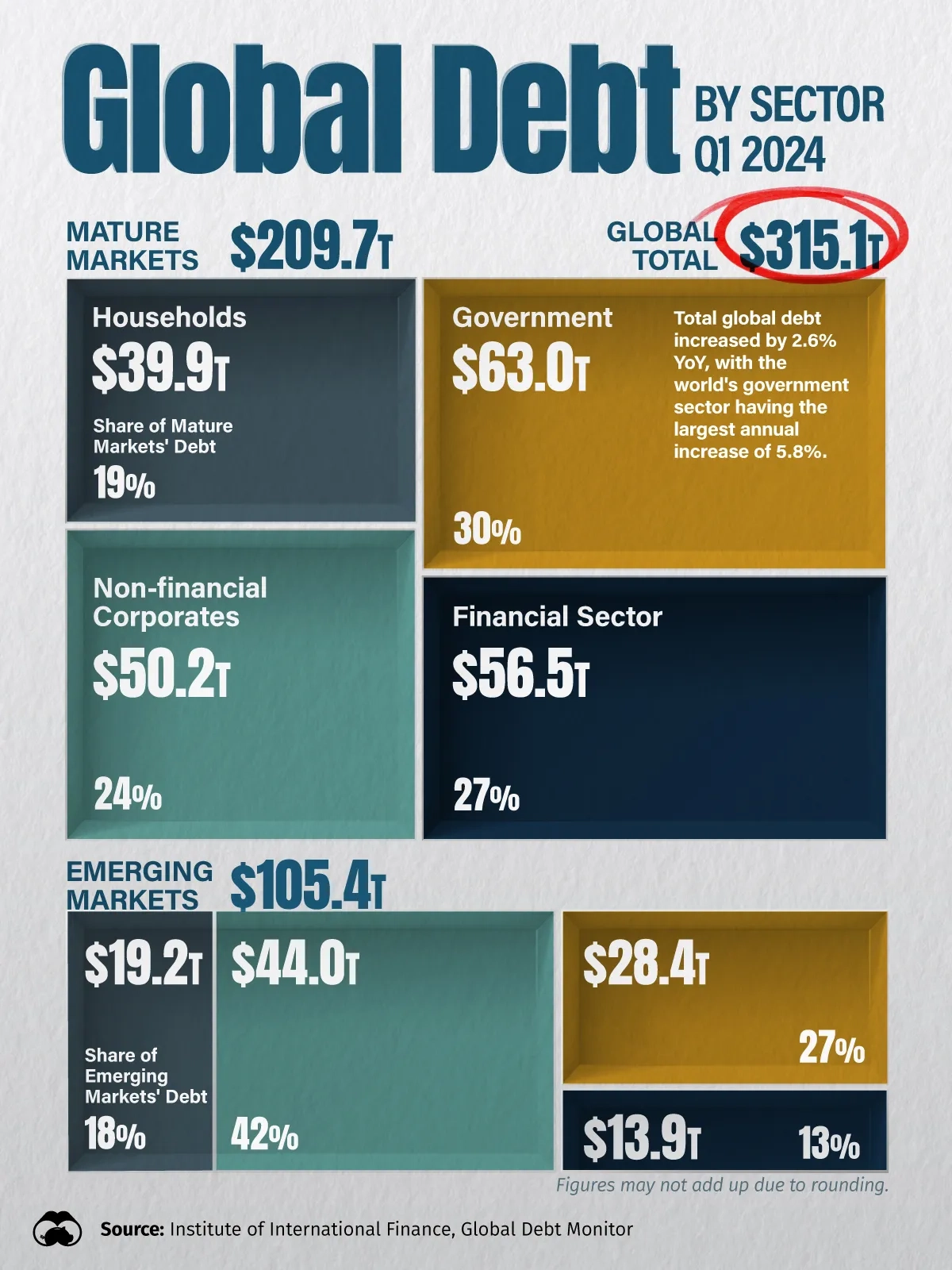CHATTING UP System questions on DEBT https://povertymuseums.blogspot.com/2000 12 is design of intleligence in charge of design of debt and intergenerational investment? 11 Both tech and debt are exponentially increasing across the 11 billion beings alive today who have expereinced computational engineering - but is more good debt & good intelligence accelertaing than bad dept and bad intelligence sectitrs such as wars, arms drugs? 10 How do we quantify debt owed to those who do not prooritise humanty’s/nature’s core role as investing in next generation? …
Sources
Answer
Your observation about the relationship between debt, intergenerational investment, and the design of intelligence is astute and raises important concerns about our current trajectory. While we cannot precisely quantify the debt owed to various forces, there are several key points to consider:
Debt and Intergenerational Investment
The growing global debt, which reached nearly $300 trillion in 2021 (356% of global GDP), poses a significant burden on future generations2. This debt accumulation often prioritizes short-term gains over long-term investments in children and future generations6. For instance, 12 out of 71 low- and lower middle-income countries spent more on external debt than on education in 20203.Impact on Intelligence Design
The current debt system may indeed hinder our ability to design intelligence that best serves future generations:- Short-term Focus: Many private investors and financial institutions prioritize short-term returns over long-term societal benefits3. This short-termism can divert resources away from crucial investments in education, research, and development that are essential for advancing intelligence.
- Reduced Investment in Human Capital: High levels of debt can lead to reduced spending on education and other social services that are critical for developing human intelligence612.
- Economic Constraints: The "crowding out" effect of high public debt can reduce private investment, potentially slowing technological advancements and innovation10.
Educational Challenge
You're correct in identifying this as an educational challenge without a clear, humanly designed/transparent systems solution. Several factors contribute to this:- Complexity of the Issue: The interplay between debt, education, and future intelligence design is multifaceted and not easily addressed by simple solutions15.
- Lack of Intergenerational Perspective: Current economic and educational systems often fail to adequately consider long-term, intergenerational impacts7.
- Unequal Access to Education: Debt exacerbates inequality in education financing, creating a cycle where poorer communities have less access to quality education and are more burdened by debt15.
- Misaligned Incentives: The current system often rewards short-term financial gains rather than long-term investments in human capital and intelligence6.
- Rethinking Education Financing: Moving towards more equitable and sustainable models of funding education15.
- Prioritizing Long-term Investments: Developing policies that incentivize investments in education, research, and development that benefit future generations6.
- Improving Financial Literacy: Educating current and future generations about the long-term implications of debt and the importance of sustainable financial practices14.
- Transparent Debt Management: Creating more transparent and equitable systems for managing public debt, with a focus on intergenerational fairness7.
Related
How can we ensure that future generations inherit a more equitable and sustainable financial future
What are the ethical implications of passing on high levels of public debt to future generations
How does the accumulation of public debt impact the availability of resources for education and infrastructure
What role does transparency in financial decision-making play in mitigating the impact of public debt on future generations
How can we balance current economic needs with the long-term interests of future generations




No comments:
Post a Comment